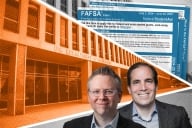You have /5 articles left.
Sign up for a free account or log in.
A majority of undergraduates are either "undermatching" or "overmatching" when they enroll in college -- and the students themselves may be responsible for the choices being made.
That is the finding of a study released Monday by the National Bureau of Economic Research. The issue of undermatching -- where students do not apply to or enroll in the best colleges likely to admit them -- has been attracting increasing attention in the last year. Many educators fear that undermatching leads highly talented low-income students away from the colleges with the best resources -- and keeps those colleges less diverse than they might be.
The new study finds not only widespread undermatching, but also widespread overmatching, in which students appear to be enrolling at institutions that could be much better academically than perhaps is appropriate for the given student. (An abstract of the study is available here.)
The study -- of a large national cohort of students -- found 25 percent to be overmatching and 28 percent undermatching.
In most cases, the study found, students and their families are responsible for the apparent mismatching that is going on. "Perhaps most surprising to us, student decisions drive mismatch in almost all cases. Most students who mismatch either do not apply to a well-matched school or apply and are admitted, but do not enroll," the authors write. "Typically students who are mismatched aren't getting rejected by appropriate colleges: they are either not applying, or are getting in and opting not to enroll."
The two economists who wrote the study -- Eleanor Wiske Dillon of Arizona State University and Jeffrey Andrew Smith of the University of Michigan -- stressed that they are not saying all mismatch is bad for students or colleges. (In fact, they are at work on a new study on the impact of mismatch.) But they say that the large percentage of mismatched students suggests a need for admissions officers, high school counselors and others to think about the issue.
Either kind of mismatch may or may not help students, the authors says. "A strong student at a weak school may stand out and garner extra faculty attention, or she may exert less effort due to the bad study habits of her peers," they write. "A relatively weak student at a strong school may benefit from the extra resources and the strong peers, but may also find herself overwhelmed by the pace of instruction and the level of performance expected."
Dillon and Smith used the National Longitudinal Survey of Youth and assigned students a percentile (based on such factors as test scores) to reflect their academic preparation for college. Then colleges were similarly given percentiles to reflect their academic standing. Overmatching or undermatching occurred, they argued, when there was a 20 point divergence between the percentile ranking of the students and the percentile ranking of the colleges.
Many of the reasons for undermatching have been documented: Students who undermatch may not realize the opportunities available at elite colleges and universities, may not realize that they could succeed (and might be more likely to succeed) at more competitive institutions, and so forth.
The study confirms those findings, but adds more about those who overmatch and those who are more likely to match at seemingly appropriate colleges.
Advantage appears to favor overmatching. "Students from the wealthiest families, from neighborhoods where many adults have college degrees, and from high schools where many students go on to college are less likely to be undermatched but also more likely to be overmatched."
In an interview, Smith said that what this comes down to is that "just having parents who for whatever reason know how the system works is going to help." Further, he noted that there are these days "many private colleges that have room for one more who can pay."
And then there are advantages of location. Many students favor colleges that are geographically close by -- because these are public institutions they know, because they offer in-state tuition rates, or because they allow students to live at home and save money. The study found a statistically significant decrease in mismatch when there was "a well matched" public institution within 50 miles of the student.
The paper urges students and families not to assume that just because they managed to get admitted to a "better" institution that that college is the best for them. "[J]ust because we find evidence that more informed students and their families think college quality trumps concerns about overmatch does not make it so. Students and parents believe lots of things contrary to the evidence; this particular belief might belong to that set," the authors write. But the paper also says that there should not be any assumption that an optimal admissions process would yield no overmatching or undermatching. That's probably not possible, and it ignores the many non-academic factors in students' decision-making.
In an interview, Smith said it's also the case that some overmatching may be quite legitimate. A talented musician or athlete, he said, may be admitted to a college based on those talents and not academic ability alone. Many critics of affirmative action have suggested that consideration of race in admissions results in many black and Latino students overmatching. But the new study says that the authors "do not find evidence" for this to be the case. He said that there was evidence of a major problem with low-income students (minority and otherwise) undermatching, but that minority overmatching "was just not an issue."








